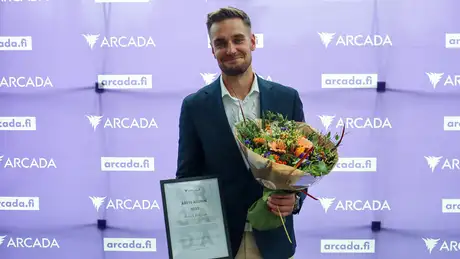Cartoon Influencers: The Influencer storytelling format as a potential mainstream alternative for animated media by Daniel Farrera
Published: 04.06.2021 / Alumni / Education / Entrepreneurship / Blog
Since the early days of animation, creators have been seeking ways to build bridges between the fictional worlds of animated characters and the real world through interaction with the audience. New technologies and social media allow for narratives which cartoon characters can use to have a multi-platform interaction with broad audiences, and create strong emotional bonds with them as the phenomenon that this research classifies as “Cartoon Influencers”.
The goal of this research was to analyze the potential, challenges, risks and results of cartoon characters that have successfully used, what this research identifies as, “the influencer storytelling format” or “ISF”. It helped to determine the criteria that a cartoon character would need to meet in order to be considered as a potential success in the format. Ultimately, this research lays the ground for future research and development on the ISF and cartoon influencers.
To achieve this, I used a theoretical framework to pull information from existing knowledge, and related theories and studies that could help to set the context and concepts of cartoon influencers and the ISF. This was complemented with six semi-structured interviews that dove deep into the experience of animation industry experts and professionals with virtual and cartoon influencer projects. The findings of both, the theory and the interviews, were analyzed and compared to land a relevant conclusion.
The Cartoon Influencer cases referenced in the interviews were “Barbie Vlogs”, “O (sur)real mundo de Any Malu”, “Catalina la Catrina”, “La fiesta de Bob Esponja”, “Villanos” and “Mar.ia”. All the interviewees acknowledged the success of their and external projects. Whereas it is still a young phenomenon, signs of its potential are already evident. The interviewees’ organizations, audiences and even sponsors have shown proof of satisfaction and praise. These content creators are studying the successful patterns in digital platforms and try to replicate them with cartoon characters. They are responding to a demand of interaction and disruptive experiences by an audience which has social media integrated as part of their daily lives.
The main challenge these content creators have come across is the handicap of animation production. It is a type of production that requires intensive planification, larger teams of people and larger amounts of resources than live action productions, they usually have rigid pipelines and a limit on how short their time frames can be. This handicap does not go along well with the fast paced production and publication of content on social media. While technological advancements have allowed animation to take some short cuts, it is yet not as efficient as the single-handedly workflow of human influencers.
The criteria, resulting from the findings, that a cartoon character needs to meet to succeed in the ISF starts with having a well developed character that covers all corners of its personality, and to come up with a character complex enough to survive the intensive level of exposition of the ISF. The script is another key element for the success of cartoon influencers. Whereas non-fictional narratives can be explored with the ISF, having a strong and smart script aided the interviewees to have a clear path to follow and to prevent contingencies. A character driven narrative that keeps the audience at its center is paramount to find relevance. As cartoon characters are brands themselves and/or are utilized as brand ambassadors, it is necessary that they also carry through the brand’s DNA. The interviewees agreed and emphasized upon having a clear purpose when using this approach with cartoon characters.
Most of the ethical concerns that surfaced regarding virtual influencers are mostly related to “virtual humans”, which commonly try to emulate a human influencer both in behavior and visuals. Both, the interviewees and theory, advice on clarifying the fictional nature of virtual influencers to avoid confusing the audience, and in order to build trust and affinity. Brand owners are very careful when exposing their brands in social media, and especially when giving fictional characters a voice to speak directly to the audience. When using the ISF, cartoon characters acquire the same ethical implications and risks as a human influencer or celebrity. The cultural capital that a cartoon character accumulates through time is in many cases as powerful as the one of a human celebrity. Nevertheless, a cartoon character has the advantage of being timeless, generally allowing more control and having more versatility than a human.
As an artist and creator, I consider of high relevance the findings and contributions of this research to the fields of animation and storytelling and to the MA in Media Management program at Arcada UAS. Few studies on the relevance of cartoon characters as cultural figures exist. Acknowledging their influence power and the existence of a potential new mainstream animation format opens the door to innovation in the animation industry and for digital media at large.


